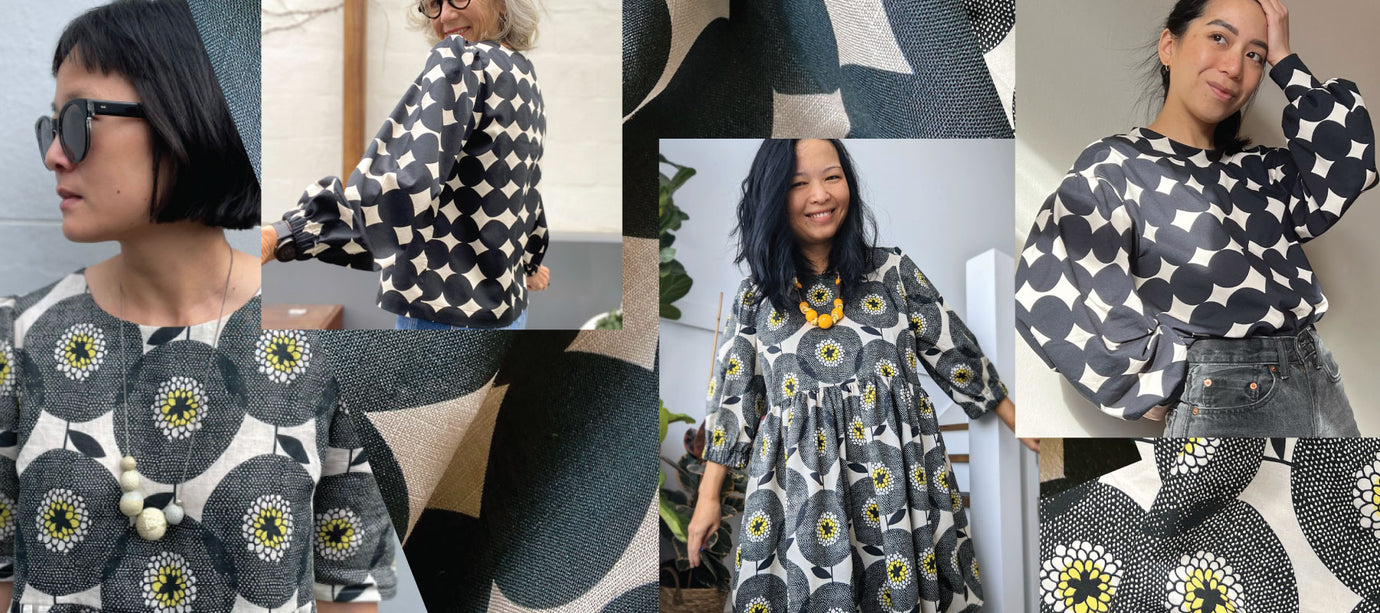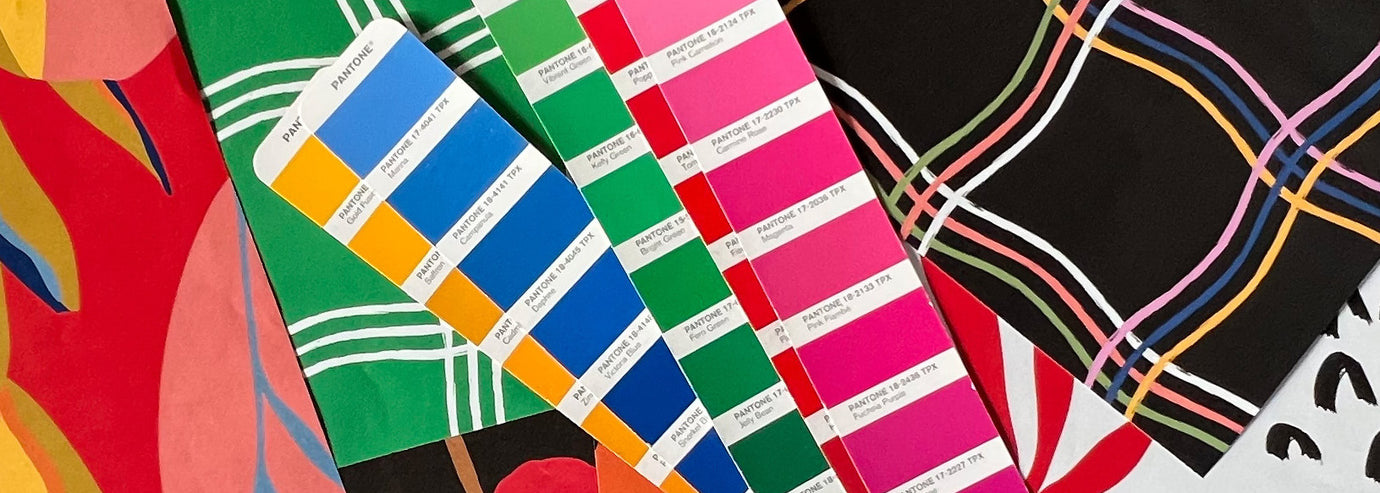Sewing: Tackling Our Tee Dress With Katie

Katie from Katie Makes A Dress has a secret weapon, it is her sewing machine and she is not afraid to use it. She will tackle anything in the sewing department from swimwear to quilt jackets to lingerie.
Katie has jumped on board as a guest blog contributor for Nerida Hansen Fabrics and to kick things off she has put our Tee Dress pattern to the test.
Choosing your size:
The Tee Dress is designed to be loose and boxy, so knowing that, I decided to make the 14 even though my bust measurement put me into the 16-18. However, the dress is quite straight up and down and I didn’t really think about fitting my hips in too, which means the one I made could do with a bit of extra hip room! So I would recommend following the size chart for your hip measurement and grading out if necessary. That’s not too complex at all, just blend the lines between the sizes from bust to hip. I’m 165cm tall and when I held the pattern pieces up against myself, I knew it would be a bit too long for me. So I shortened the pattern at the lengthen/shorten lines.
Before you sew:
- I’d recommend pre-washing, drying and pressing your fabric. I know it’s boring, but most natural fibres will shrink a little (this includes cotton lycra), so it’s a worthwhile step. Cotton lycra likes to curl at the edges, so the pressing helps combat that too.
- I trace my pattern onto either Trace and Toile or lightweight sew in interfacing. I know, it’s another step. Not a completely necessary one, but I do like being able to keep the original intact and make changes to the traced version instead. It also means I can use the original to trace off extra sizes if I’m feeling generous enough to sew for other people.

- Knit fabrics can be a bit shifty to cut, so nice sharp pins and a large flat surface is the way to go. I use my kitchen bench or dining room table, but the floor is ok too if your knees are ok with that.
-
Make a cup of tea and find a delicious snack to have on hand.

Pressing: - You don’t have to press right now, but I like to get up and do a batch in one hit if I can. I like to pre-press anything that needs to be folded in half, in this case the neckband, the sleeve cuffs and the tie.

- Sew the neckband and sleeve cuffs you’ve just pressed by joining the short ends right sides together and sewing at 7mm. You could overlock this, but I prefer to use the regular sewing machine and a straight stitch - it’s less bulky and the seam doesn’t need to stretch anyway.
- Do the same with the hem band pieces, except you’re joining the front piece to the back piece at the short edge, twice.
- Head over to the overlocker and sew the front and back body pieces together at the shoulder seams.

- With the right sides of the two hem bands together, overlock the bottom edges together. I did this upside down and had to cut new ones! So make sure you’re overlocking the hem edge and not the edge that attaches to the bottom of the dress.

- Pin your pockets to the sides of the front and back body pieces, matching notches. Sew with a 7mm seam allowance. I prefer to straight stitch on my sewing machine.

- Pin the sleeves to the armhole openings and use your overlocker to sew them in flat.

- Now, flip the dress so the right sides are together, align the sleeves, sides seams and pockets and pin everything in place. Again, you could use your overlocker for this, but the curves around the pocket openings can be tricky. I prefer to use a straight stitch on a sewing machine here too. You can use a stretch stitch, but since it’s on a seam that doesn’t need to stretch, I find it’s fine to use a straight stitch. Or, you can straight stitch it first and overlock to finish the seams if you prefer how it looks. Sew from the edge of the sleeve, down the side seams, around the pockets and down to the hem.
- Grab your tie that you pre ironed and flip it so the right sides are together. Mark the centre on the long raw edge with a small notch and pin up to a few centimeters each side of the notch. Overlock from the short ends and up to the pins before the centre notch. Do the same for the other side. The opening is left so the tie can be turned right way out.

- Once you’ve turned your tie, use a chopstick or a large knitting needle to poke out the corners and give it a press. Turn the raw edges of the gap toward the inside and pin in place. Use a stretch stitch (or hand stitch) to sew it closed.


- Find your sleeve cuffs, fold them along the crease you pressed earlier (wrong sides together), line up the cuff seam with the underarm seam on the sleeve and pin them to the right side of your sleeve. Overlock in place.
- The neck band is similar, however it is shorter than the opening to make sure it sits smoothly against the body. Match the notches on your neckband with the notches on the dress neckline. The seam of the neckband sits at the shoulder seam of the dress. Pin in place. You will have to stretch the neckband between the pins as you sew it. Make sure to only stretch the band, not the neckline of the dress. If you are new to knit neckbands, try basting it in place with a straight stitch first, then overlock afterwards.


- Pin the hem band to the bottom of the dress, making sure the front hem band pieces match the front of the dress and the back pieces match the back. Align the side seams of the dress to the side seams of the band. Pin in place and overlock.
Look at you! You made a super cute and comfy dress. Well done! Now give the whole thing a nice press, concentrating on the neckband, the sleeve cuffs and the hem. Put it on and marvel at your creation.







